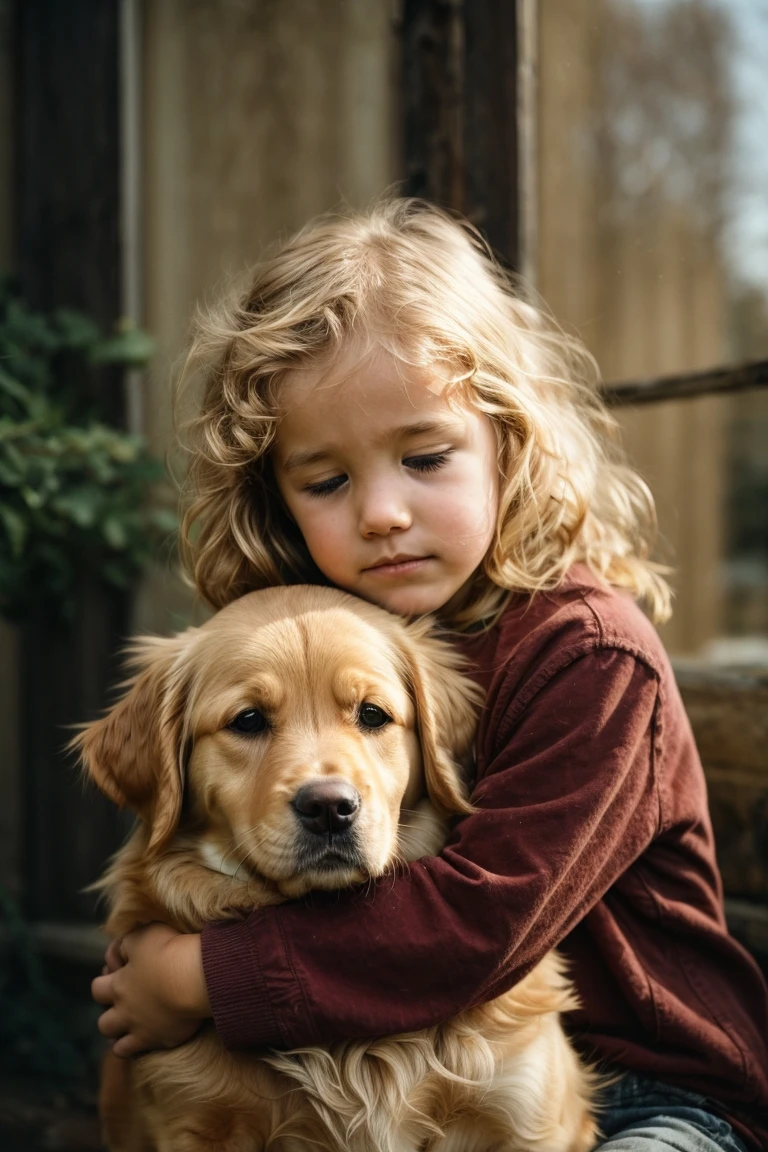Talking to Children About the Loss of a Pet

The loss of a beloved family pet can be devastating for children. Pets often play a significant role in kids' lives, so it is important for parents to handle these difficult conversations with care, honesty and compassion. This guide provides tips on how to break the sad news, offer comfort during the grief process, and help children of different ages understand pet loss.
Before the Loss
If you know in advance your pet is terminally ill or reaching end-of-life, you can lay the groundwork for the coming loss in an age-appropriate way.
For Young Children
- Use simple language about the pet "being very sick"
- Say doctors are helping make the pet comfortable
- Note that it has lived a long, happy life
- Say you and the doctors are doing your best
- Maintain normal routines and activities
For Older Children/Pre-Teens
- Have an open talk about the pet's illness and prognosis
- Explain life cycles and that the pet lived a full life
- Discuss normal feelings like sadness, anger, denial
- Encourage questions and conversations
- Involve them in care for the ill pet
Preparing children even a little can cushion the blow when a pet dies. Answer questions honestly but optimistically.
Breaking the News
Deliver the news simply and directly, but with great warmth and compassion when a pet dies.
- "I have some very sad news to share. Our dear pet died today."
- "We lost our beloved pet this morning. I know how much you loved them."
Use the words dead/died - avoid confusing euphemisms like "went to sleep".
Give your child space to express their feelings. Ask open-ended questions and validate their emotions.
"I know you feel very sad right now. It's normal to cry when you lose someone that's important."
Offer comforting physical contact - hugs, sitting together quietly. Let them guide the interaction.
Supporting the Grieving Process
The depth of grief may surprise parents, as children often form very close bonds with pets. Allow them to openly experience all feelings.
Common Reactions
- Denial
- Anger
- Bargaining
- Guilt about something they did/didn't do
- Intense sadness and tears
- Physical symptoms like loss of appetite
- Sleep disturbances or bad dreams
- Acting out or misbehavior
Explain these reactions are normal parts of the grieving process. Emphasize the pet's death was not their fault.
Ways to Help Children Cope
- Allow expression through talking, crying, art projects
- Hold memorial services, make memory books/collages
- Share happy memories and stories
- Look at favorite photos together
- Write letters to the pet expressing feelings
- Spread pet's ashes or bury remains in meaningful place
- Make a donation to animal charity in pet's honor
- Adopting another pet when ready can restore joy and companionship
Find outlets for their feelings, celebrate the pet's life, and focus on comforting rituals.
Pet Loss by Age Group
Children comprehend death differently at varying stages of development. Tailor your conversations accordingly.
For Preschoolers (3-5 years)
- Use simple, clear language
- Say the pet's "body stopped working"
- Explain it can't eat or play anymore
- Note they will not see the pet again
- Emphasize it is not their fault
- Expect rapid changes between crying and play
- Provide comfort through routines, affection
Use books and play to reinforce concepts. Avoid details they can't grasp. Offer reassurance.
For Elementary School (6-8 years)
- Use specific language - "the pet died"
- Explain the physical reality the pet's heart stopped beating
- Affirm they could not have prevented or changed it
- Help identify and name their emotions
- Allow involvement in remembrance rituals
- Watch for acting out behaviors
- Encourage expression through play, drawing
- Reassure that you are still here to care for them
Answer questions simply. Allow expression through creative outlets. Provide stability.
For Pre-teens (9-12 years)
- Have honest conversations about death
- Encourage sharing complex feelings
- Explain normal grief may last a long time
- Involve them in remembrance rituals
- Allow ways to memorialize pet like poems or photograph collages
- Watch for isolation or hiding feelings
- Reach out to teachers/school counselors if needed
- Reinforce you are there whenever they need to talk
Discuss death more intellectually. Provide creative expression outlets. Seek support.
When to Seek Additional Help
While grief over a pet loss is normal, contact a professional if children exhibit:
- Prolonged depression
- Risky behaviors
- Severe loss of interest in activities
- Physical complaints from stress
-Withdrawal from friends/family
Ongoing changes in behavior, school issues or physical problems should prompt discussions with teachers, pediatricians or mental health providers.
Healing and Moving Forward
With time and support, your child will adapt to life without their beloved pet. Cherishing memories, processing the loss and focusing on the future will help.
- Share stories and look at photos of happy times
- Plant flowers or create an art project in the pet's memory
- Write a poem or letter to the pet
- Donate toys/supplies to animal shelters
- Volunteer as a family at an animal charity
- Adopt a new pet when your child is ready
- Focus on the positives like reduced suffering
When they open up, listen and empathize with your child’s pain. Offer ways to honor the pet’s memory. Help them use their grief to grow emotionally. Keep communication going through this difficult transition. With your steady guidance and comfort, your child will learn to cope with one of life’s most painful lessons.